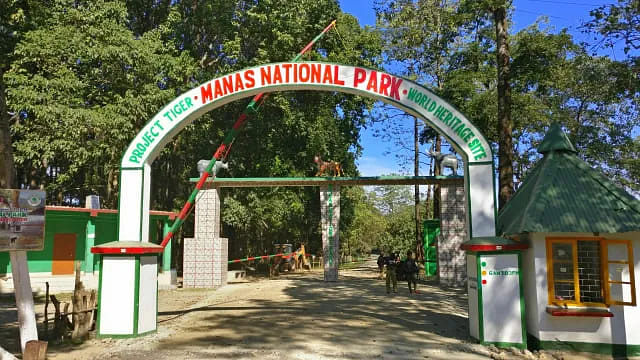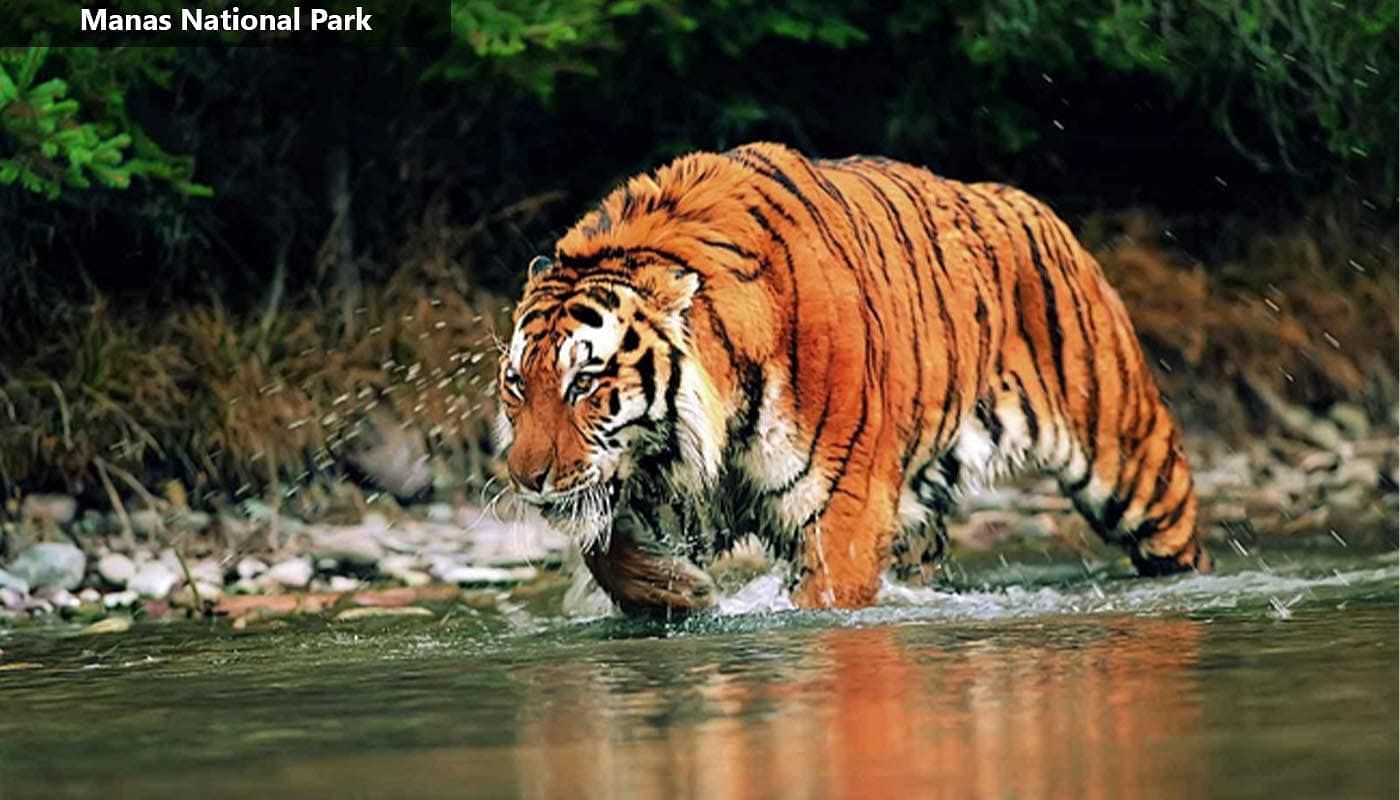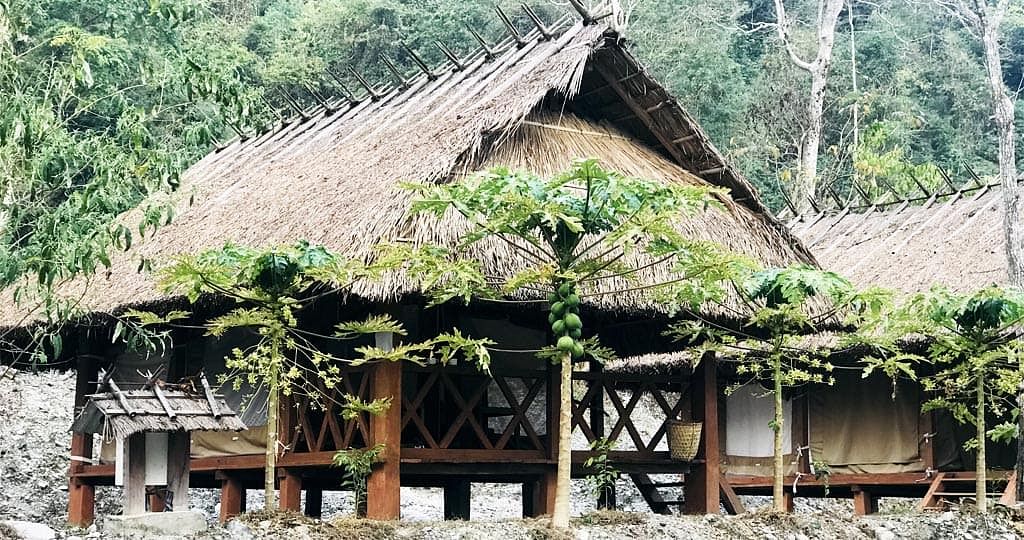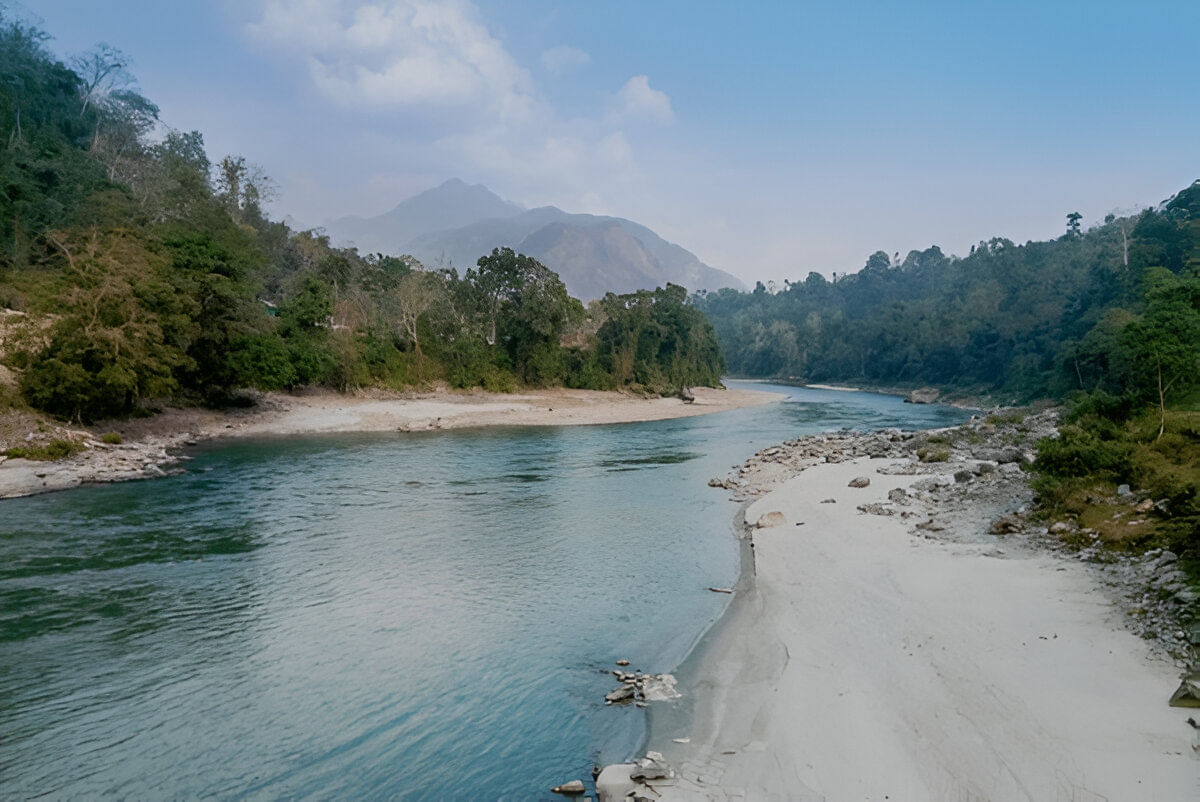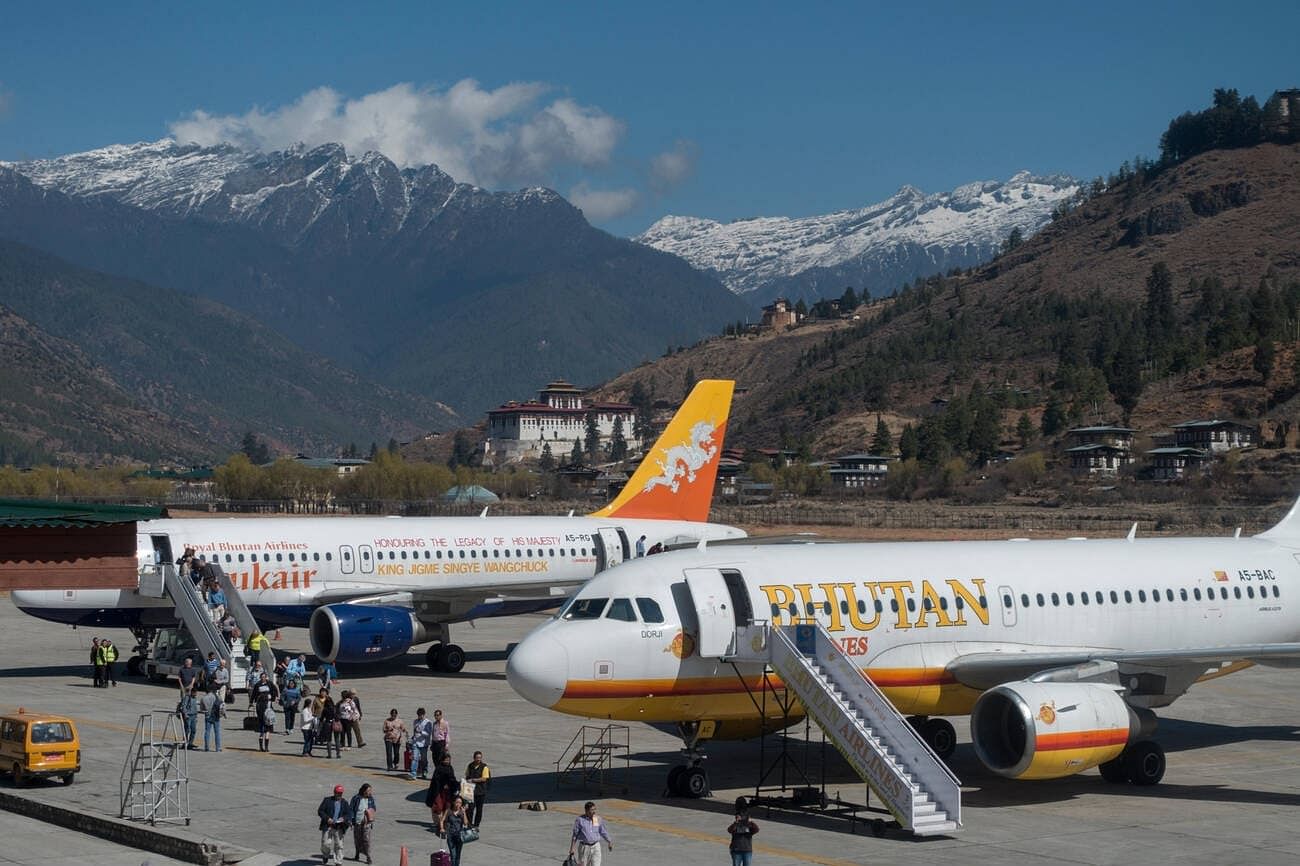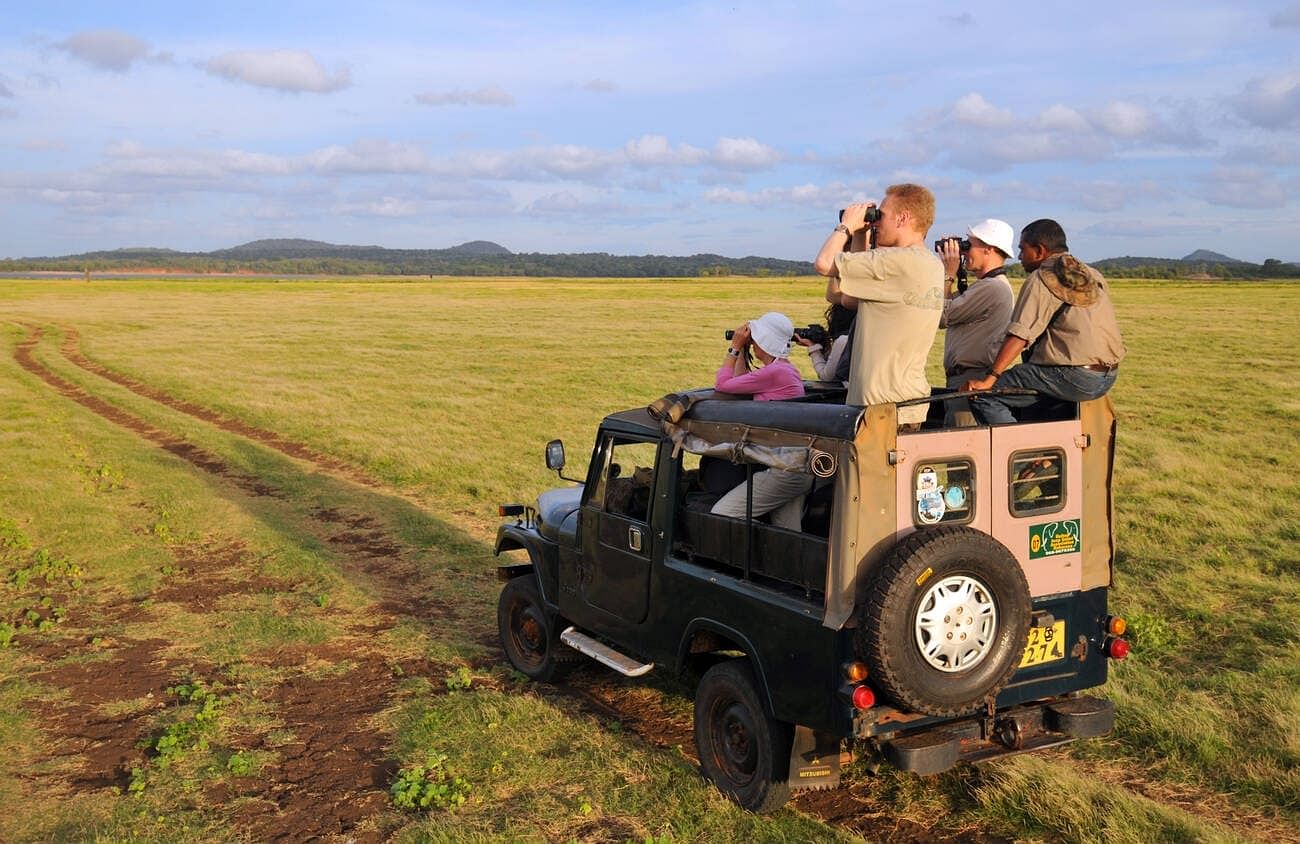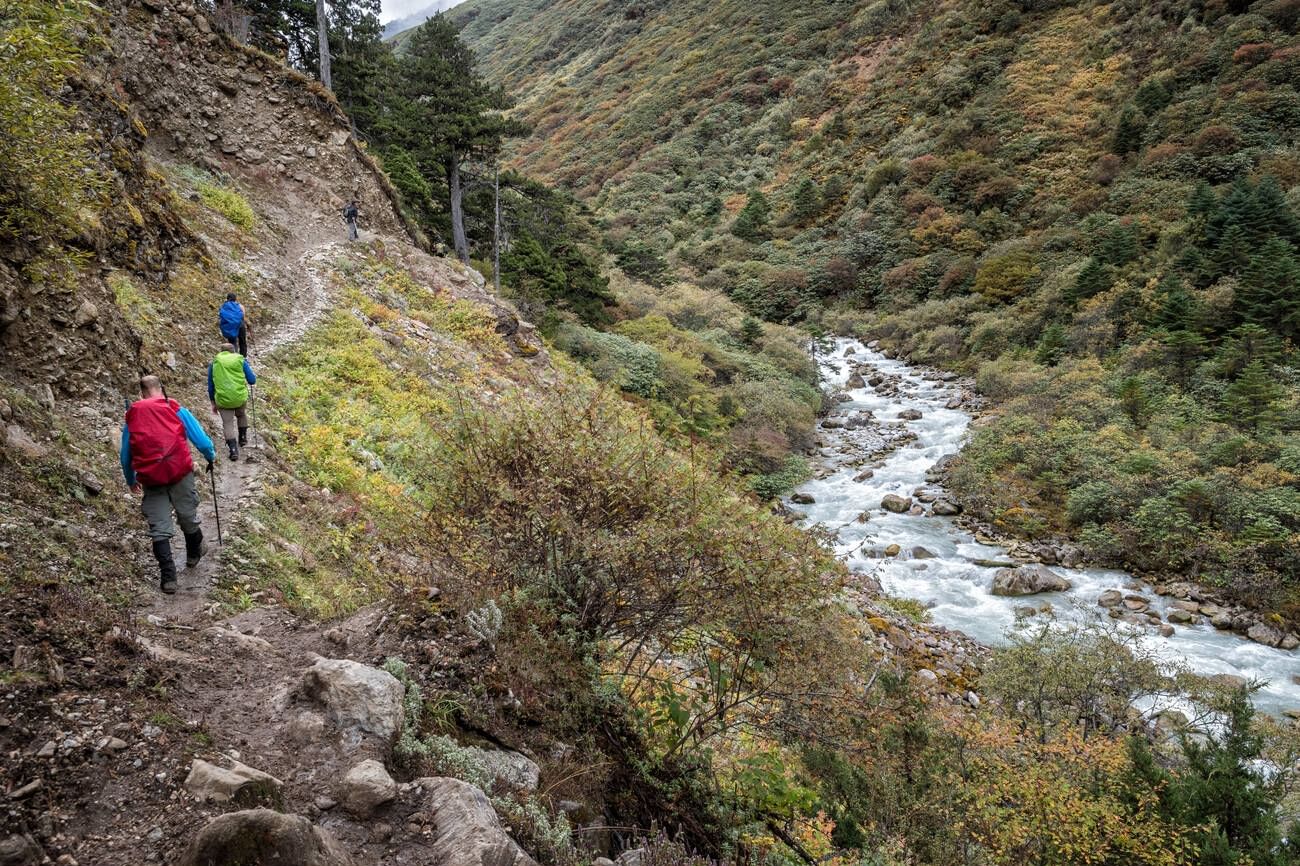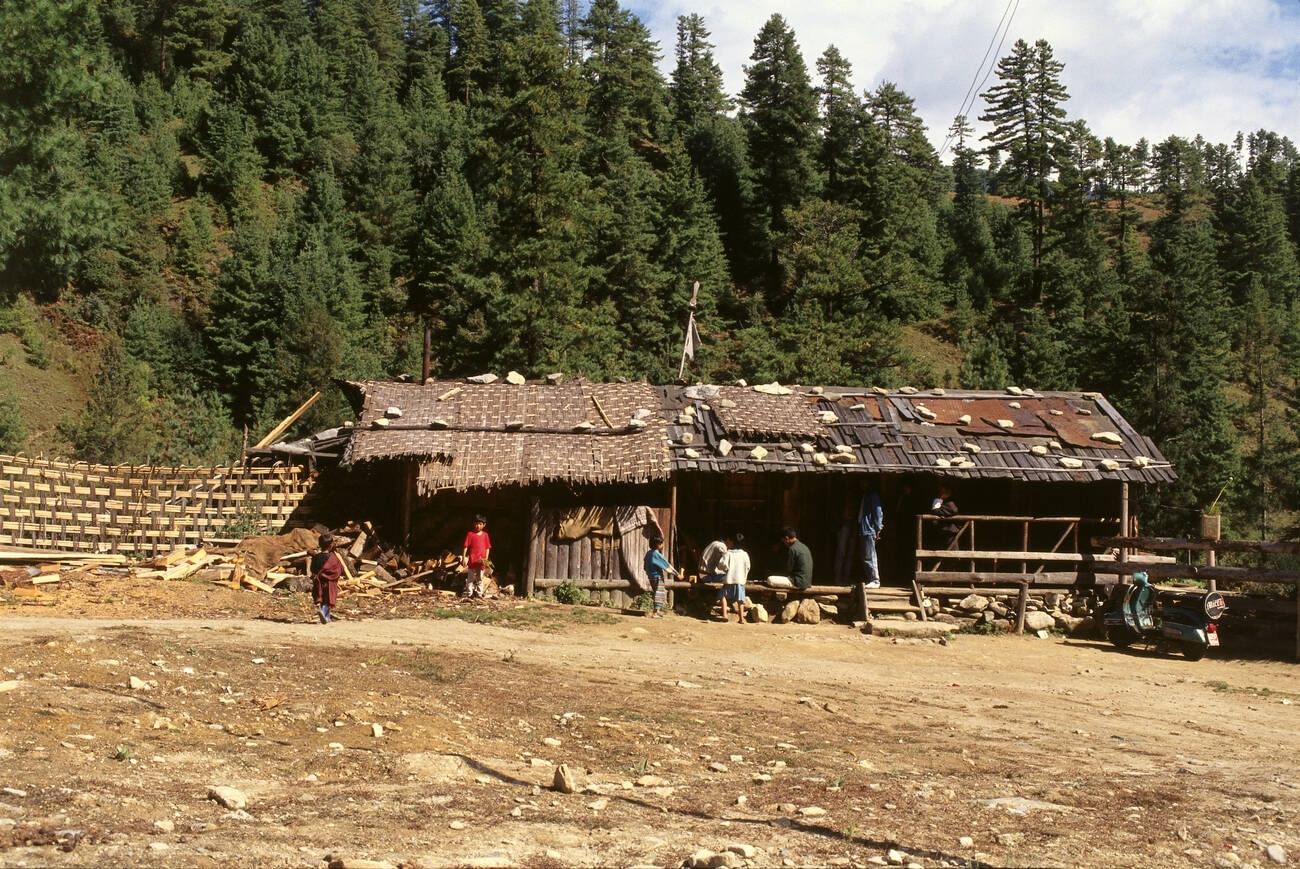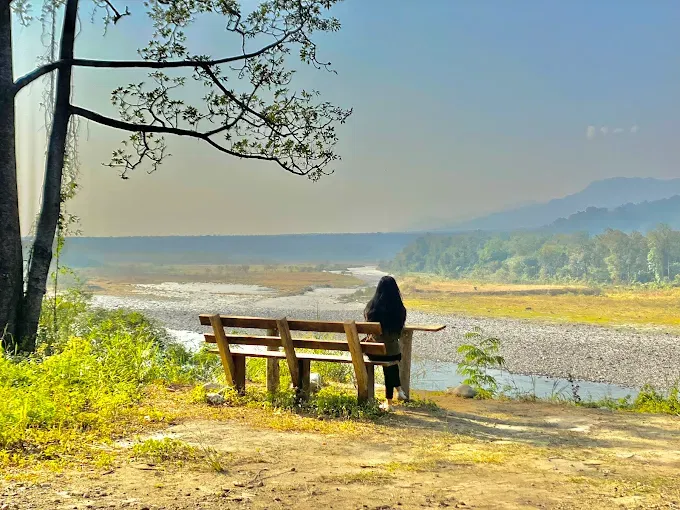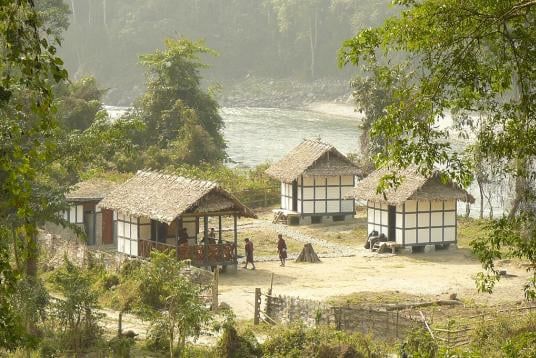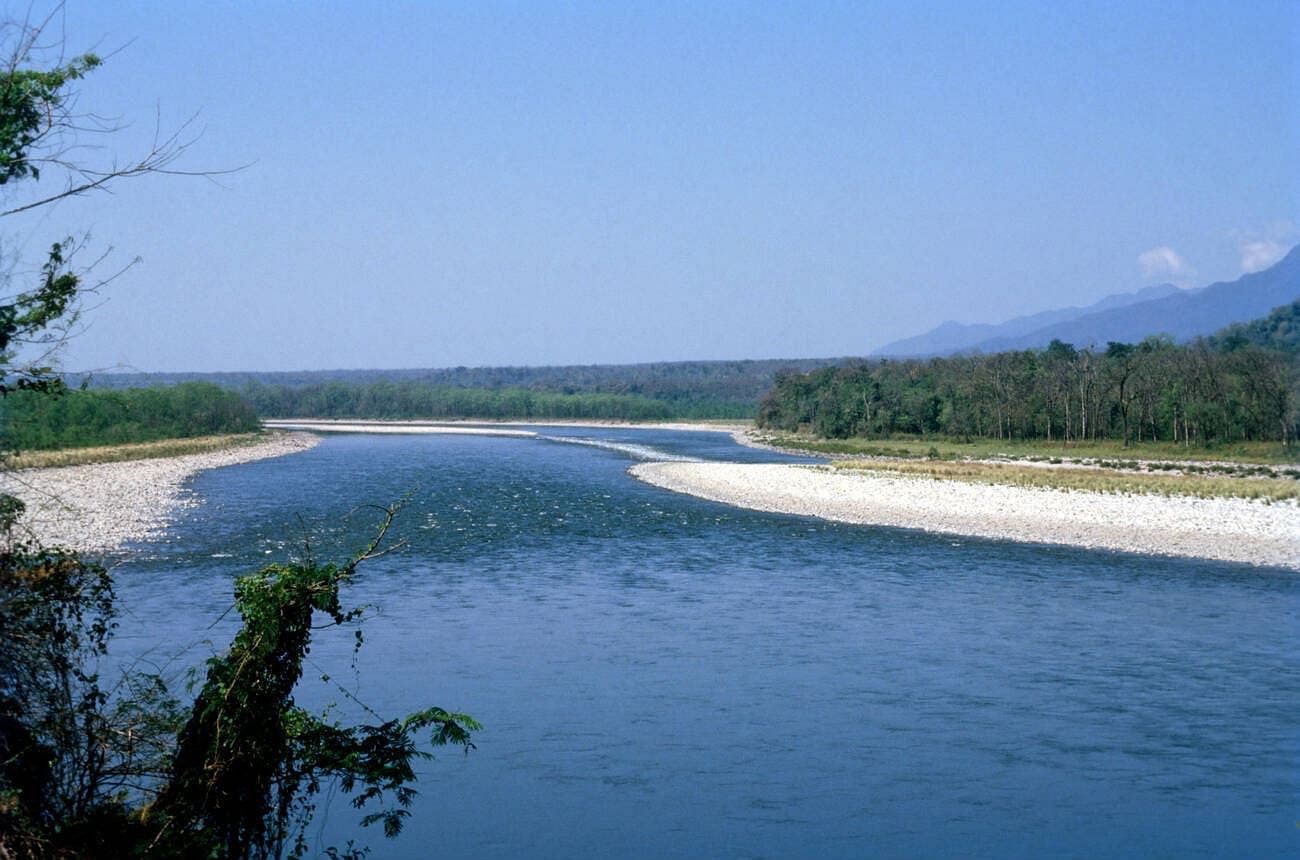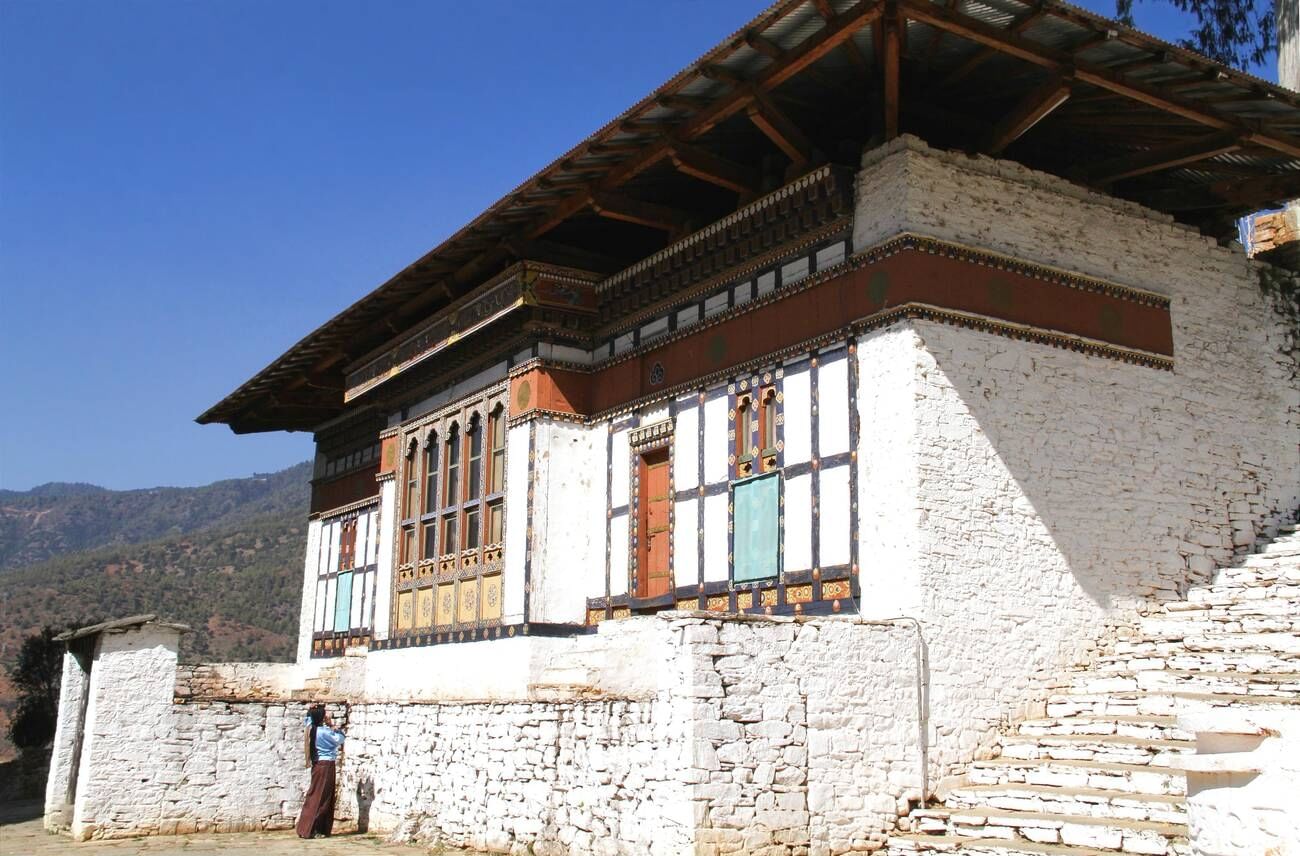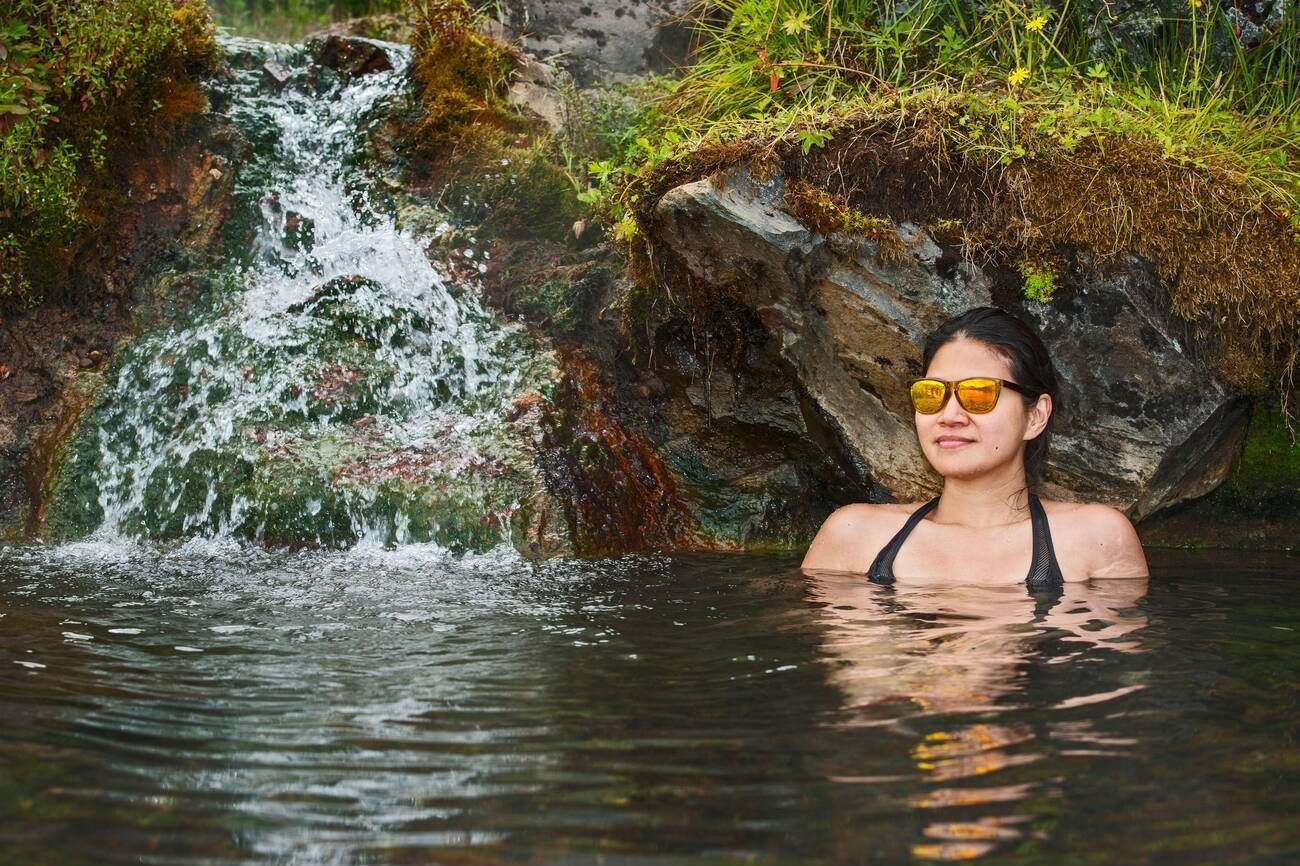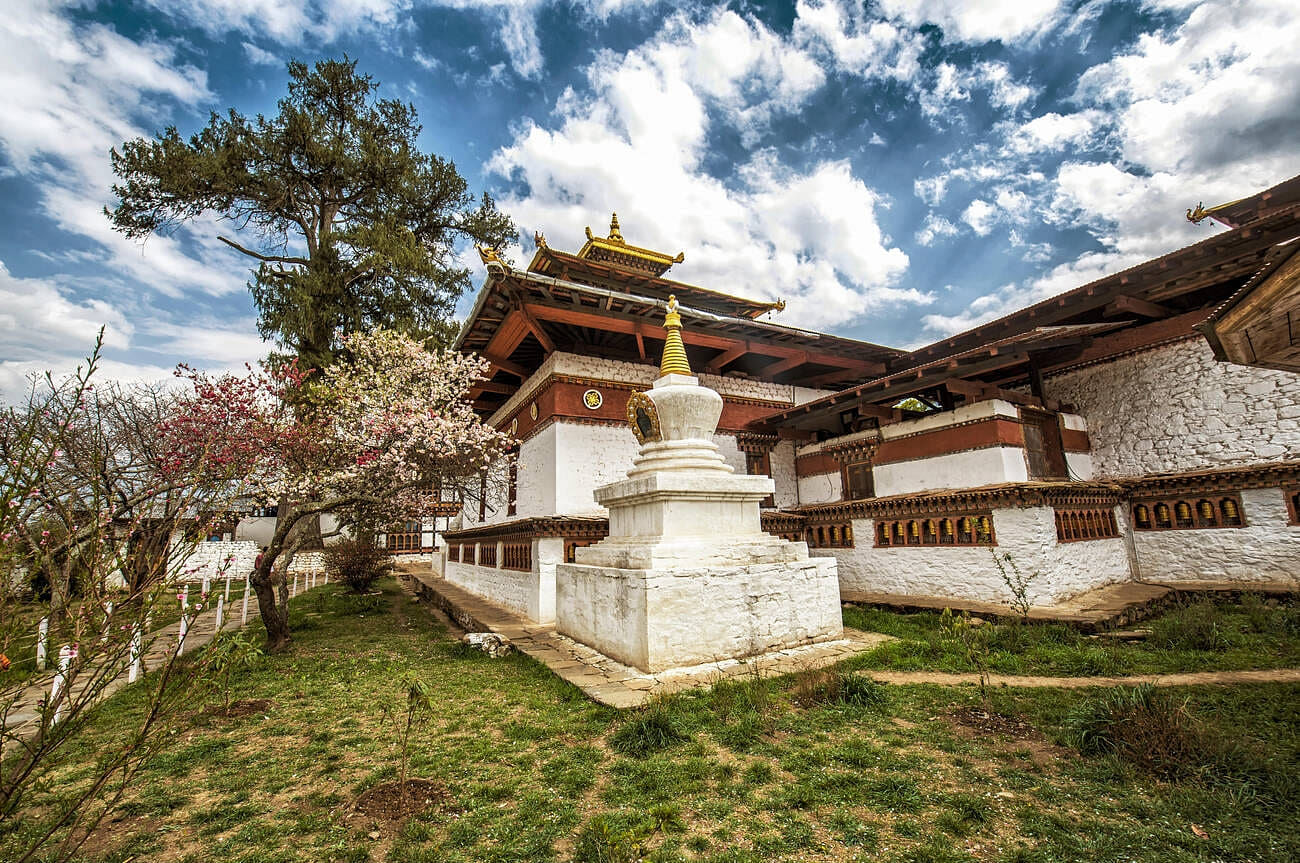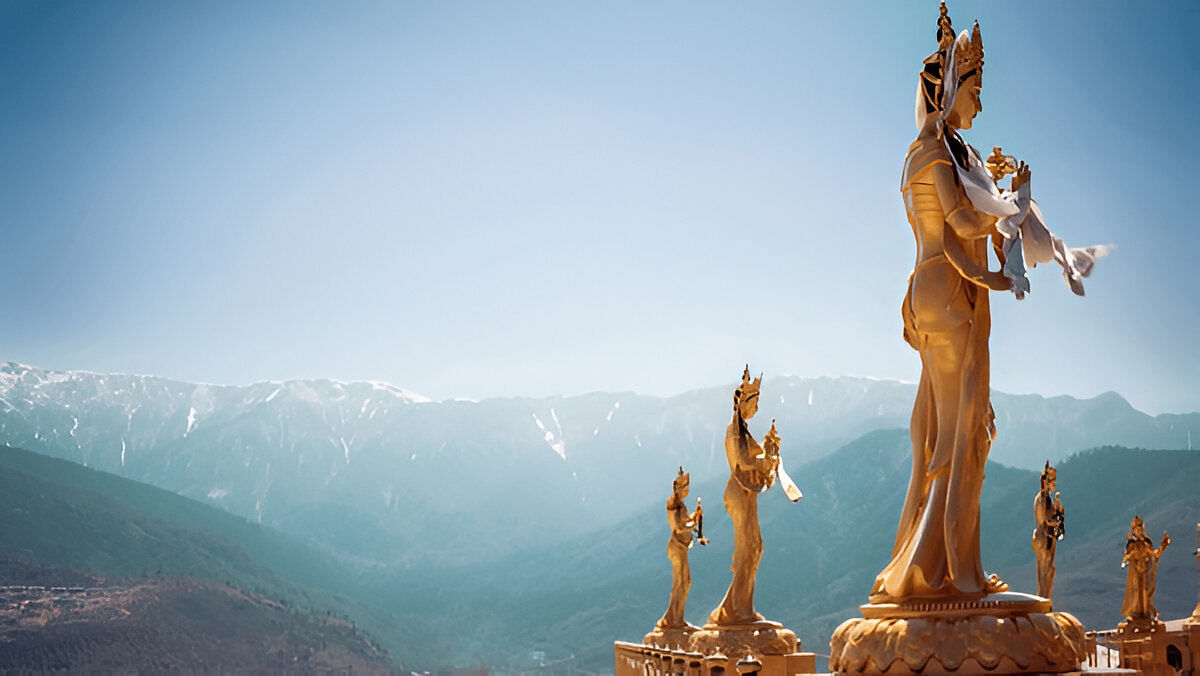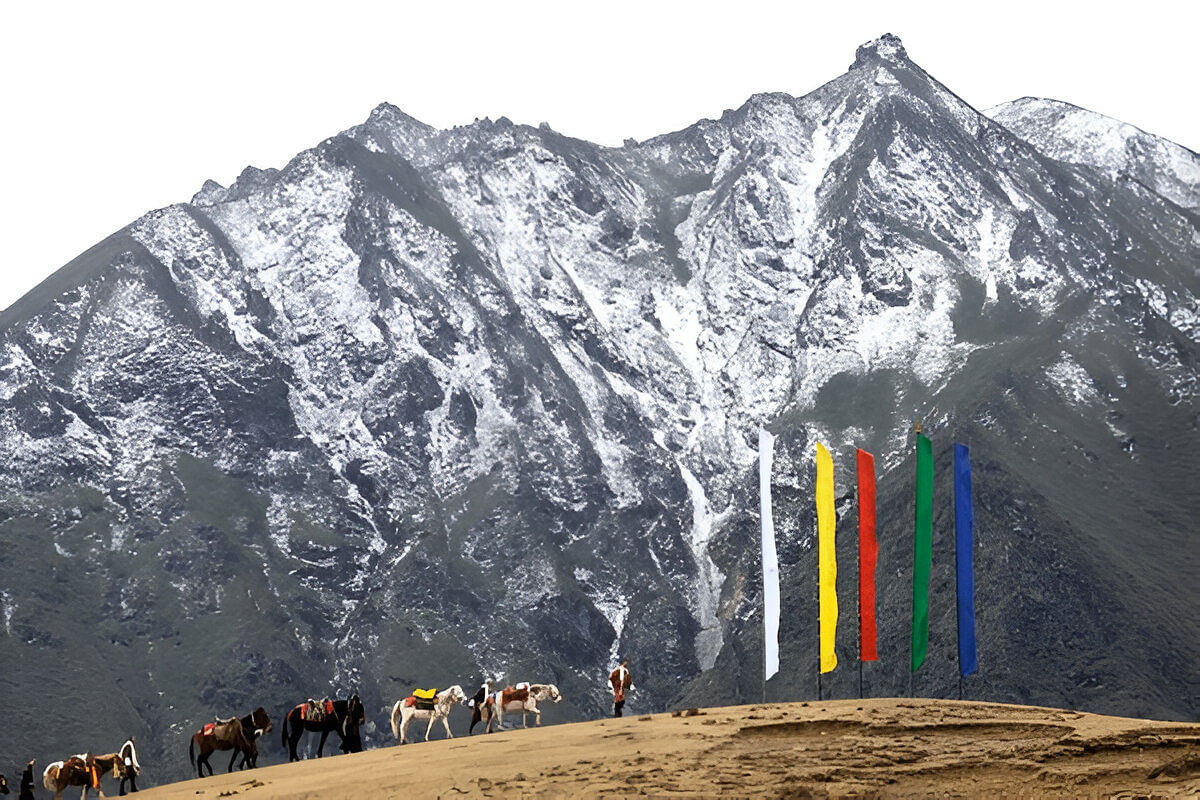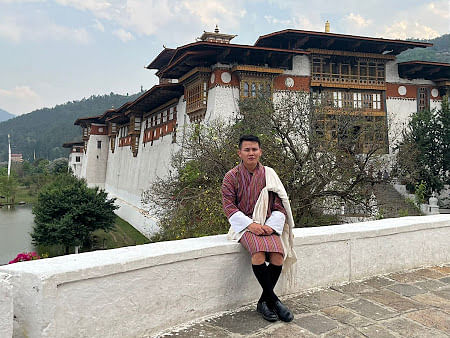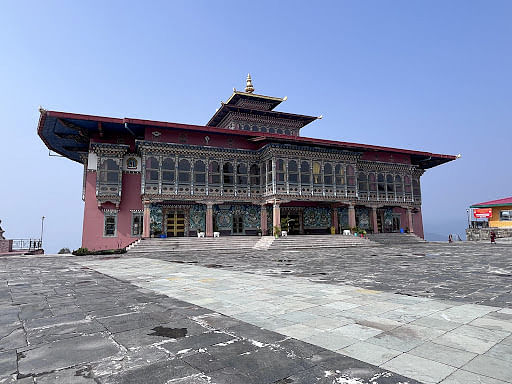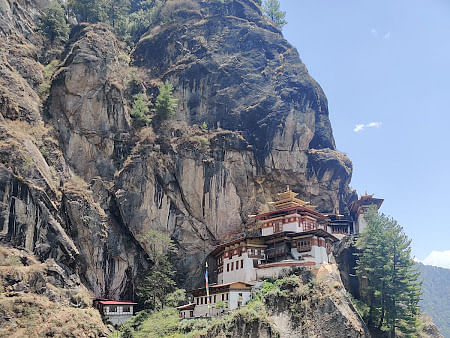You know how most people think of Bhutan and picture those famous monastery photos? Well, Royal Manas National Park is nothing like that. If you're sick of touristy destinations and need some genuine wilderness, this is your solution. It's really one of the coolest places to visit in Bhutan .
Here's what blew my mind about Bhutan Manas National Park - you're walking along these jungle trails and boom, fresh tiger tracks in the mud. These big cats actually live here, along with wild elephants that sometimes block the forest paths. The coolest animals, though, are these golden monkeys. Seriously, they look like they're covered in gold fur, and they only exist in this tiny corner of the world.
The Manas River cuts right through the park, so you can go white-water rafting while wildlife spotting. Or just stick to the walking trails - either way, you'll see birds you've never heard of and maybe catch a glimpse of a leopard lounging in the trees. Just skip the monsoon season unless you like getting wet.
Ready for an actual jungle experience? Our Bhutan Tour Packages can deliver you there without all the fuss of planning.
Basic Facts About Royal Manas National Park
- Established: 1966 as a wildlife sanctuary; upgraded to a national park in 1993.
- Area: 1,057 square kilometres.
- Royal Manas National Park location:Gonphu, Bhutan.
- Timings: 9 AM to 5 PM.
- Biodiversity: Home to over 65 mammal species, 489 bird species, 60 fish species, and 180 butterfly species.
History of Royal Manas National Park
Back in 1966, Royal Manas was just a humble wildlife sanctuary - fast forward to 1993, and it’s a full-blown national park. Honestly, this place is a big deal for Bhutan’s conservation game. It’s where Bhutan really rolled up its sleeves and got into the nitty-gritty of wildlife protection and research. These days? Royal Manas is pretty much a living treasure chest packed with rare plants and all kinds of endangered animals.
Best Time to Visit Royal Manas National Park
Wondering about the best time to visit Royal Manas National Park?
The winter months, from November to February, are ideal. The weather is cool and dry, perfect for wildlife spotting and birdwatching-especially migrating birds.
Spring and autumn - March to April, September to October-are also great for visiting. These seasons offer mild weather and wildlife movement. Note that the monsoon (May to September) brings heavy rain- 5,000 mm annually - making wildlife viewing tough.
How to Reach Royal Manas National Park
If you're planning to visit Royal Manas National Park, here's a clear and friendly guide on how to get there from different starting points.
By Air + Road
- Fly into Paro Airport, Bhutan’s only international airport.
- From Paro, you can take a domestic flight to Gelephu Airport-Druk Air serves this route, with a flight taking under 2 hours.
- Once in Gelephu, the park is still about 106 km away, roughly a 3–4 hour drive through scenic southern Bhutan.
- From Thimphu, you can drive directly to the park-about 276 km, a long but beautiful 8–10 hour journey passing through towns like Wangduephodrang and Tsirang.
From the Border – Via India
If entering Bhutan via India, here's one route many travellers find helpful:
- Cross at the Gelephu border gate from Assam. From there, you can drive 106 km to the park, taking around 3 to 4 hours by car.
- Another route: Samdrup Jongkhar, though approximately 3 3-hour drive from Gelephu, is often used-but not always open for tourists from all countries.
Trek Routes
If you’re up for an adventure, there’s a wonderful eco-trek:
- The Gomphu–Manas–Norbugang eco-trail spans several days and offers a deep immersion in nature. Entry can start from Gomphu (reachable by road from Gelephu in about 5 hours or from Zhemgang in 3 hours).
- Trekking through the forest, crossing rivers, spotting wildlife, and staying in simple eco-camps make this a memorable journey.
- Note: this route crosses into Indian territory, so you need double-entry visas for both Bhutan and India, with immigration processes at Gelephu or Samdrup Jongkhar
Things to Do in Royal Manas National Park
Stepping into Royal Manas National Park? It’s like wandering straight into a wildlife fever dream-colours everywhere, stuff moving in the trees, birds yelling at each other. If you’re looking to Zen out by a river or get your blood pumping chasing after rare animals, you’ll find both and everything in between.
1. Jungle Safaris & Wildlife Watching
Just hop in a jeep, or if you’re feeling extra, climb onto an elephant (yeah, an actual elephant-beats Uber, right?). Roll through the jungle and, who knows, maybe you’ll lock eyes with a Royal Bengal tiger or spot a rhino mowing the grass. Clouded leopards? Golden langurs? Pygmy hogs? It’s basically the animal kingdom’s secret VIP club, and you’ve got a ticket in. Forget documentaries-this is the real deal.
2. Birdwatching – A Birder’s Paradise
If birds are your thing, you’re in for a treat. There are, what, nearly 500 species flapping around here? Hornbills with crazy beaks, graceful herons, eagles doing their majestic thing. Bring your binoculars and try not to trip over your own feet staring up at the treetops. Quiet patience is the game, but the payoff? Chef’s kiss.
3. Jungle & River Trekking
Lace up those boots and hit the trails-Manas River Trail, Golden Langur Trail, or go big with the multi-day Gomphu–Panbang Trek. Expect waterfalls, hidden salt licks (yes, animals love those), bamboo forests, and tiny villages popping up where you least expect them. It’s part hike, part cultural deep-dive, part “Wait, is that a wild elephant?
Float down the Manas River and just vibe for a bit. If you’re lucky, you’ll spot Ganges river dolphins popping up like it’s no big deal. Summer’s prime time for fishing, too-try landing a golden mahseer, and then brag about it forever.
5. Mountain Biking & Camping
Wanna cover more ground? Grab a mountain bike and blast down forest trails-wind in your face, mud everywhere, heart racing. Or, if you’re more about the slow life, set up camp under the stars, listen to the jungle at night, and try not to freak out at every mysterious rustle.
6. Hot Stone Bath Experience
After all that running around, you’ll want to melt into a hot stone bath. Bhutanese folks have this down to an art-hot rocks, herbal water, pure bliss. One soak and you’ll forget you ever had muscles that hurt.
7. Cultural Immersion with Local Communities
The Khengpa people live right inside the park, and honestly, hanging with them is better than any tourist brochure. Check out their bamboo houses, eat what they eat, maybe dance or try your hand at some local crafts. You’ll leave with stories and probably a few new dance moves.
8. Eco-Friendly Stay & Learning
Crash at one of the eco-camps if you care about the planet (and who doesn’t these days?). You get fresh forest air, the sound of birds, and hosts who actually know what they’re talking about when it comes to wildlife and conservation. Some even offer guided walks or show you around research centres-nerd heaven.
9. Photography & Nature Art
Everywhere you look, it’s a postcard. Snap misty mornings, catch a langur mid-leap, or just doodle in a sketchbook by the river. Whether you’re shutter-happy or just into soaking up colours, you’ll leave with way more inspiration than you bargained for.
Honestly, Royal Manas is the kind of place you visit once and then spend years boring your friends with stories about. Go ahead, get lost in it.
Royal Manas National Park Entry Fee
Manas National Park isn’t exactly a “one price fits all” kind of place. Your wallet’s gonna feel it differently depending on where you enter (Bansbari or Bhuyanpara) and whether you’re local or rolling in from abroad.
Lately, if you’re packing a crew of five in a jeep, it’s roughly ₹4,500 for Indians, but if you’ve got a foreign passport, expect to drop about ₹5,500. That covers the jeep, driver, and all that permit nonsense. Of course, prices like to do the cha-cha, so don’t be shocked if they shift.
Oh, and if you’re dreaming of an elephant safari or wanna go rafting down the river like you’re in some Nat Geo special, those are extra. Nothing’s really all-inclusive here, but hey, at least you get options
Jeep Safari Prices
- Indians: Around ₹4,500 for the Bansbari Zone and ₹5,500 for the Bhuyanpara Zone.
- Foreigners: Can be significantly higher, with the Bhuyanpara Zone sometimes priced around ₹8,000.
- Includes: Jeep, driver, permit fees, and park service charges.
- Capacity: The vehicle typically accommodates 4-6 people.
Other Activities
- Elephant Safari: Available for different zones with varying costs.
- River Rafting: An option in Manas with different prices for Indians and foreigners.
Important Notes
- Zone: The price varies depending on the zone you choose, with the Bansbari Zone often being the central and most popular.
- Non-Sharing: Safaris are generally non-sharing, meaning the vehicle is booked for your group.
- Price Fluctuations: Prices can change, so it's best to check with official sources or tour operators closer to your travel date for the most accurate rates.
- Timing: Safaris usually occur in three slots throughout the day, typically around 6:30 AM, 10 AM, and 2 PM.
Places to Visit in Royal Manas National Park
While exploring Places to visit in Royal Manas National Park, keep an eye out for:
1. Panbang Village (Your Gateway to Adventure)
Panbang is this tiny village that nobody talks about, but it's where you'll probably end up sleeping before heading into Royal Manas National Park Bhutan. The place is pretty basic - don't expect fancy hotels or anything. But the people here are incredible. They've lived next to the Manas River their whole lives, so when you ask about spotting tigers, they actually know what they're talking about. Plus, staying here feels way more authentic than some tourist lodge.
Look, rivers are rivers, right? Wrong. This one's different. You might sit by the water for hours just watching, when suddenly a dolphin's head pops up out of nowhere. Turns out they're super rare Ganges dolphins. The boating on the Manas River isn't some touristy paddle boat thing - it's locals taking you to spots where they've actually seen elephants drinking. Way better than any zoo.
3. Trong Heritage Village & Bjokha Village
Trong has these old stone houses that look like they could survive an earthquake. The view from up there is nuts - mountains everywhere. Bjokha is smaller and feels like visiting your grandmother's village, if your grandmother happened to live in a medieval Bhutan Village. You'll see kids still playing with sticks and stones instead of phones. Kind of refreshing, honestly.
4. Dunmang Natural Hot Spring
Your legs will be killing you after hiking all day, and then someone will mention these hot springs. The water smells a bit sulfury, but man, it works. The Dunmang Natural Hot Spring in Bhutan isn't some spa experience - it's literally just hot water bubbling up from rocks. But after being covered in jungle sweat, you'll think it's amazing.
5. Research Centre (Where Science Meets Adventure)
These researchers are total wildlife nerds, and that's meant in the best way. They'll show you photos from their camera traps - stuff you'd never see otherwise. One guy might spend twenty minutes explaining why tiger poop tells you so much about their health. Sounds gross, but it actually makes your park visit way more interesting when you know what to look for.
Royal Manas National Park Travel Tips
- Permits: Entry often requires park permits or is restricted-planning through a tour operator is best
- Guides: Having a guide helps with permissions and enriches your experience.
- When to go: Winter and spring are best. Monsoon (May–September) brings heavy rain.
- What to pack: Bring sturdy shoes, binoculars, water, and appropriate gear for the forest conditions.
- Respect nature: Stay quiet, follow trails, and don’t litter-wildlife is fragile here.
In short, Royal Manas National Park is one of Bhutan’s most precious natural treasures. It’s a place where wild jungles meet sacred rivers, where endangered animals still roam freely, and where relaxed culture blends with thrilling adventure. Whether you're a wildlife lover, a birdwatcher, or simply seeking peace, Royal Manas National Park Bhutan, offers an extraordinary experience that stays with you long after you leave.





